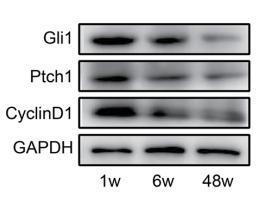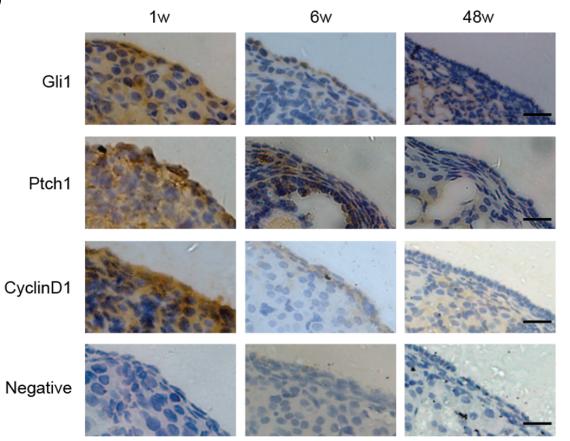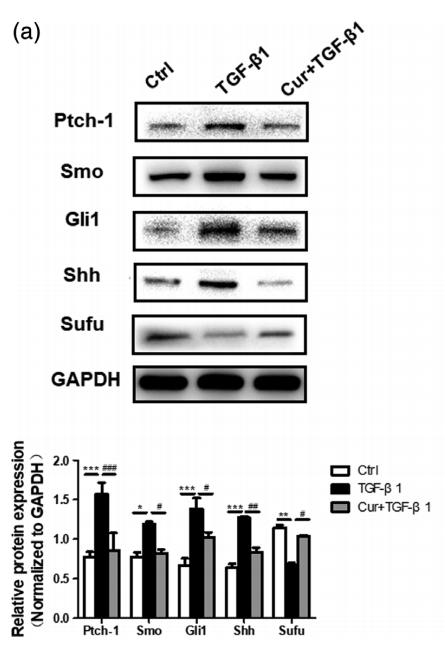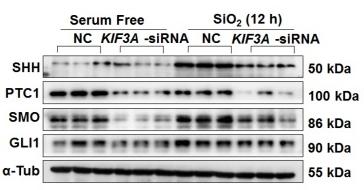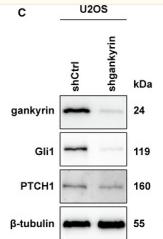Patched/PTCH1 Antibody - #AF5202
Related Downloads
Protocols
Product Info
*The optimal dilutions should be determined by the end user. For optimal experimental results, antibody reuse is not recommended.
*Tips:
WB: For western blot detection of denatured protein samples. IHC: For immunohistochemical detection of paraffin sections (IHC-p) or frozen sections (IHC-f) of tissue samples. IF/ICC: For immunofluorescence detection of cell samples. ELISA(peptide): For ELISA detection of antigenic peptide.
Cite Format: Affinity Biosciences Cat# AF5202, RRID:AB_2837688.
Fold/Unfold
A230106A15Rik; BCNS; FLJ26746; FLJ42602; Holoprosencephaly 7; HPE7; mes; NBCCS; OTTHUMP00000021709; OTTHUMP00000021710; Patched; Patched (Drosophila) homolog; Patched 1; Patched homolog (Drosophila); Patched homolog 1 (Drosophila); Patched homolog 1; Patched protein homolog 1; Protein patched homolog 1; PTC; PTC1; PTC1_HUMAN; PTCH; PTCH protein +12b; PTCH protein +4'; PTCH protein -10; PTCH protein; ptch1; PTCH1 protein; PTCH11;
Immunogens
A synthesized peptide derived from human Patched/PTCH1, corresponding to a region within N-terminal amino acids.
In the adult, expressed in brain, lung, liver, heart, placenta, skeletal muscle, pancreas and kidney. Expressed in tumor cells but not in normal skin.
- Q13635 PTC1_HUMAN:
- Protein BLAST With
- NCBI/
- ExPASy/
- Uniprot
MASAGNAAEPQDRGGGGSGCIGAPGRPAGGGRRRRTGGLRRAAAPDRDYLHRPSYCDAAFALEQISKGKATGRKAPLWLRAKFQRLLFKLGCYIQKNCGKFLVVGLLIFGAFAVGLKAANLETNVEELWVEVGGRVSRELNYTRQKIGEEAMFNPQLMIQTPKEEGANVLTTEALLQHLDSALQASRVHVYMYNRQWKLEHLCYKSGELITETGYMDQIIEYLYPCLIITPLDCFWEGAKLQSGTAYLLGKPPLRWTNFDPLEFLEELKKINYQVDSWEEMLNKAEVGHGYMDRPCLNPADPDCPATAPNKNSTKPLDMALVLNGGCHGLSRKYMHWQEELIVGGTVKNSTGKLVSAHALQTMFQLMTPKQMYEHFKGYEYVSHINWNEDKAAAILEAWQRTYVEVVHQSVAQNSTQKVLSFTTTTLDDILKSFSDVSVIRVASGYLLMLAYACLTMLRWDCSKSQGAVGLAGVLLVALSVAAGLGLCSLIGISFNAATTQVLPFLALGVGVDDVFLLAHAFSETGQNKRIPFEDRTGECLKRTGASVALTSISNVTAFFMAALIPIPALRAFSLQAAVVVVFNFAMVLLIFPAILSMDLYRREDRRLDIFCCFTSPCVSRVIQVEPQAYTDTHDNTRYSPPPPYSSHSFAHETQITMQSTVQLRTEYDPHTHVYYTTAEPRSEISVQPVTVTQDTLSCQSPESTSSTRDLLSQFSDSSLHCLEPPCTKWTLSSFAEKHYAPFLLKPKAKVVVIFLFLGLLGVSLYGTTRVRDGLDLTDIVPRETREYDFIAAQFKYFSFYNMYIVTQKADYPNIQHLLYDLHRSFSNVKYVMLEENKQLPKMWLHYFRDWLQGLQDAFDSDWETGKIMPNNYKNGSDDGVLAYKLLVQTGSRDKPIDISQLTKQRLVDADGIINPSAFYIYLTAWVSNDPVAYAASQANIRPHRPEWVHDKADYMPETRLRIPAAEPIEYAQFPFYLNGLRDTSDFVEAIEKVRTICSNYTSLGLSSYPNGYPFLFWEQYIGLRHWLLLFISVVLACTFLVCAVFLLNPWTAGIIVMVLALMTVELFGMMGLIGIKLSAVPVVILIASVGIGVEFTVHVALAFLTAIGDKNRRAVLALEHMFAPVLDGAVSTLLGVLMLAGSEFDFIVRYFFAVLAILTILGVLNGLVLLPVLLSFFGPYPEVSPANGLNRLPTPSPEPPPSVVRFAMPPGHTHSGSDSSDSEYSSQTTVSGLSEELRHYEAQQGAGGPAHQVIVEATENPVFAHSTVVHPESRHHPPSNPRQQPHLDSGSLPPGRQGQQPRRDPPREGLWPPPYRPRRDAFEISTEGHSGPSNRARWGPRGARSHNPRNPASTAMGSSVPGYCQPITTVTASASVTVAVHPPPVPGPGRNPRGGLCPGYPETDHGLFEDPHVPFHVRCERRDSKVEVIELQDVECEERPRGSSSN
Research Backgrounds
Acts as a receptor for sonic hedgehog (SHH), indian hedgehog (IHH) and desert hedgehog (DHH). Associates with the smoothened protein (SMO) to transduce the hedgehog's proteins signal. Seems to have a tumor suppressor function, as inactivation of this protein is probably a necessary, if not sufficient step for tumorigenesis.
Glycosylation is necessary for SHH binding.
In the absence of Hh ligands, ubiquitination by ITCH at Lys-1426 promotes endocytosis and both proteasomal and lysosomal degradation.
Cell membrane>Multi-pass membrane protein.
In the adult, expressed in brain, lung, liver, heart, placenta, skeletal muscle, pancreas and kidney. Expressed in tumor cells but not in normal skin.
Belongs to the patched family.
Research Fields
· Environmental Information Processing > Signal transduction > cAMP signaling pathway. (View pathway)
· Environmental Information Processing > Signal transduction > Hedgehog signaling pathway. (View pathway)
· Human Diseases > Cancers: Overview > Pathways in cancer. (View pathway)
· Human Diseases > Cancers: Overview > Proteoglycans in cancer.
· Human Diseases > Cancers: Specific types > Basal cell carcinoma. (View pathway)
· Organismal Systems > Development > Axon guidance. (View pathway)
References
Application: WB Species: Human Sample: MRC-5 fibroblasts
Application: WB Species: mouse Sample: ovarian
Application: IHC Species: mouse Sample: ovarian
Application: WB Species: mouse Sample: ovaries
Application: IHC Species: mouse Sample: ovaries
Application: WB Species: Human Sample: U2OS cells
Application: WB Species: human Sample: HemECs and HUVECs
Application: WB Species: human Sample: HIBECs
Application: IHC Species: rabbit Sample:
Restrictive clause
Affinity Biosciences tests all products strictly. Citations are provided as a resource for additional applications that have not been validated by Affinity Biosciences. Please choose the appropriate format for each application and consult Materials and Methods sections for additional details about the use of any product in these publications.
For Research Use Only.
Not for use in diagnostic or therapeutic procedures. Not for resale. Not for distribution without written consent. Affinity Biosciences will not be held responsible for patent infringement or other violations that may occur with the use of our products. Affinity Biosciences, Affinity Biosciences Logo and all other trademarks are the property of Affinity Biosciences LTD.




